The Museum Complex at Magazzino 26 in Porto Vecchio in Trieste traces the ties to the city of Leonor Fini (Buenos Aires, 1907-Paris, 1996) twenty-five years after her death with the exhibition Leonor Fini. Memories of Trieste, scheduled from June 26 to August 20, 2021. A Surrealist painter, but also a renowned costume designer, set designer, printmaker, illustrator and writer, Leonor Fini is the protagonist of a multimedia exhibition of painting, light, music and olfactory perception, which aims to be a completely new reinterpretation of the artist’s personality and creativity, analyzing her intense and fundamental relationship with her mother’s city of origin, Trieste, where Malvina Braun took her daughter at the age of one year and where Leonor was formed on an artistic cultural level as well as on a human and personal level until the age of about twenty, remaining always very attached.
Conceived and curated by Marianna Accerboni, the exhibition is promoted by the Foemina APS Association in co-organization with the Department of Culture of the Municipality of Trieste, in collaboration with the Isontina State Library of Gorizia, the Department of Culture of the Municipality of Laveno-Mombello (Varese) and the MIDeC - Museo Internazionale del Design Ceramico di Laveno-Mombello and the Media partnership of the newspaper Il Piccolo/GEDI Gruppo Editoriale.
Thanks to a rich sequence of testimonies, mostly unpublished and rare (drawings, paintings, watercolors, engravings by Leonor, documents, books, affiches, letters, a filmographic section curated by Belgian director Yves Warson, video interviews, clothes that belonged to the artist and an in-depth study on the literary and graphological aspects of her personality), the exhibition reveals not only Fini’s most intimate and private side, but also an in-depth study of the cultural climate of 20th-century Trieste. Here she lived in her mother’s house, always in the company of a cat, which would later become the main leitmotif of her art, and in close contact with the cultured international and avant-garde milieu that connoted the city at the time, assiduously associating with Trieste personalities of her own age, who would become internationally famous, such as, for example, the future gallery owner Leo Castelli, the famous critic, aesthetician and artist Gillo Dorfles, Bobi Bazlen, the great ferryman of Eastern European literature to Italy, and the painter Arturo Nathan, alongside Italo Svevo and Umberto Saba. The exhibition also features a video with the curator’s unpublished interviews on Fini with Dorfles, Nathan’s sister Daisy, and other people who knew her, and a section devoted to the porcelain decorated by Leonor, hitherto never mentioned in the many catalogs dedicated to the artist.
The exhibition, which has already been successfully presented at the Italian Cultural Institute in Brussels, where Fini is well known, having been linked to the French Surrealists, whose language boasts such international protagonists as Magritte and Delvaux in Belgium, will be staged, after Trieste, in Paris, where the painter moved at the age of 23, gaining wide acclaim and remaining there until her death. As in the other venues, the opening will be highlighted by a multimedia performance of light and music and, in Trieste, also olfactory, inspired by Leonor Fini’s art. A light macro-projection will be created, while the Italo-Brazilian musician Paolo Troni will perform live some of his unpublished compositions inspired by Leonor and conceived expressly for the exhibition, which will be played as a soundtrack inside the exhibition venue throughout the duration of the exhibition. A perfume dedicated to the painter will also be created, entitled Lolò, the nickname by which everyone, friends and family, called her in Trieste in her youthful period, and theenza will be diffused in the exhibition, representing its olfactory column.
Lesposition is part of a cycle of events, conceived and curated by Accerboni and dedicated to international figures of twentieth-century Trieste culture, which began with the exhibition Arturo Nathan. Silence and Light, conceived to celebrate the Anglo-Indo-Triestine painter, a great friend of Leonor and Dorfles, and continued with the Multimedia Encounter with Umberto Saba to commemorate the centenary of the beginning of the activity in Trieste of the bookstore of one of the greatest Italian poets of the twentieth century, and with the exhibition The Revealing Sign of Gillo, dedicated to the great critic and painter from Trieste. The itinerary will continue next year in Paris with an exhibition on Fini, also bearing witness to the particular davanguardia and cosmopolitan cultural milieu of Trieste in the early twentieth century and between the wars. Nathan, Saba, Dor?es and the Fini are in fact personalities who in the 1930s met and hung out in Trieste along with Bobi Bazlen, Leo Castelli and Svevo, before taking off towards internationality. All events in the cycle present a multimedia imprint, offering a different light and music performance at each opening, created by Accerboni site speci?c for each venue.
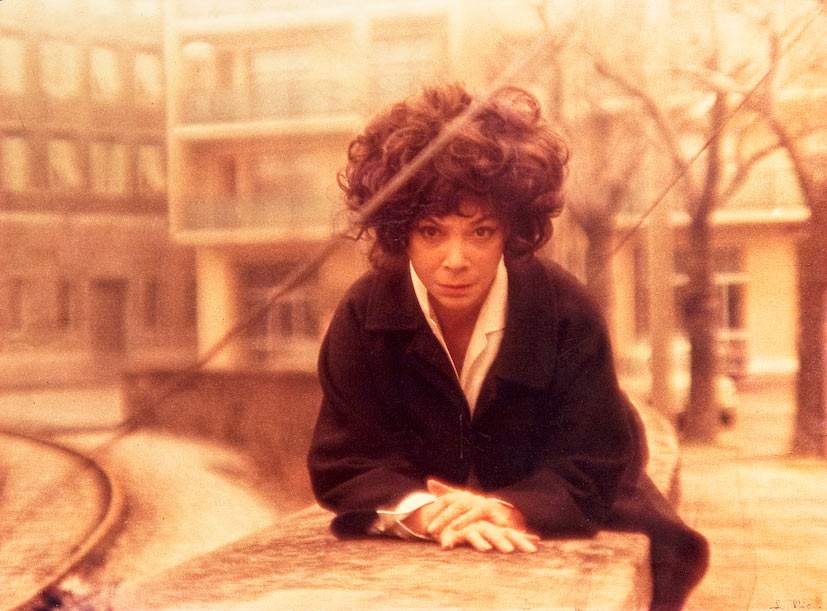 | Leonor Fini (Paris, 1950s; Trieste, Private Collection) © Marianna Accerboni |
The exhibition features sixty works, including drawings, watercolors, oils, India ink and etchings, almost all previously unpublished, and a rare book containing 49 reproductions of color drawings, in which Fini reinterprets the figure of the cat, which she considered a kind of divinity, in a fabulous key, transforming felines into the most disparate characters, as in a kind of inexhaustible fantasy tale. Among the works on display will appear the works given by Leonor to her cousin from Trieste, Mary Frausin, to whom the artist was very close, and the rich collection of works (many out-of-print and author’s proofs) given to her friend from Trieste, Giorgio Cociani, to whom the painter was united by her passion for cats and with whom she had maintained a close correspondence for about 20 years. In addition, the public will also find in the exhibition some 30 or so unpublished letters and postcards, often historiated by the artist with drawings and collages, sent to Cociani, are now displayed alongside important and rare art books dedicated to her, posters of her prestigious solo exhibitions, documents, photos and a vast and decades-old Italian and foreign press review, which will be available for visitors to consult. Also present are some of Nathan’s letters, excerpts from letters by Gillo Dorfles, other correspondence and a dozen precious pieces of clothing that belonged to Fini.
Along the exhibition route, three relevant paintings, one by Fini, one by Nathan and one by Dorfles, are also put in dialogue, symbolically testifying to their elective affinity, the introspective and visionary painting they shared and their great friendship. In the same vein of deepening and comparing the three personalities, a graphological and literary survey of their writings will be on display. Also present is a section that includes some 20 rare porcelains and sketches with motifs of masked female figures and polychrome carnival masks, decorated around 1951 by means of decals taken from drawings by Fini for the Società Ceramica Italiana (S.C.I.) of Laveno-Mombello (Varese): until now, these manufactures have never been mentioned in the numerous catalogs dedicated to the artist. Rounding out the exhibition are a video conceived by the curator with unpublished interviews with Fini’s Trieste relatives and friends (among the latter Gillo Dorfles and Daisy Nathan, the painter’s sister) and a filmographic section curated by Belgian director Yves Warson.
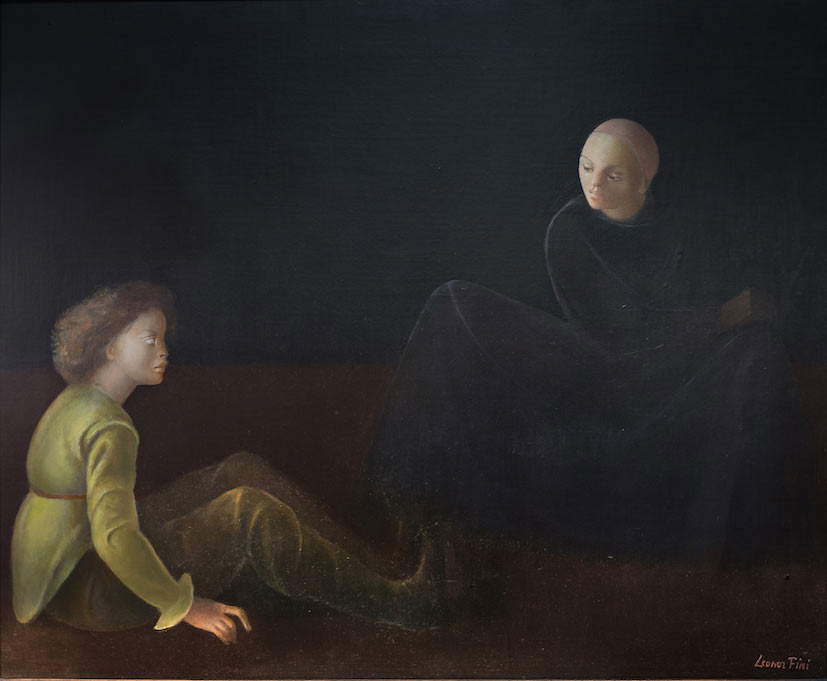 | Leonor Fini, Luna (1982; oil on canvas, 60x73 cm; Trieste, Private Collection) © Marianna Accerboni |
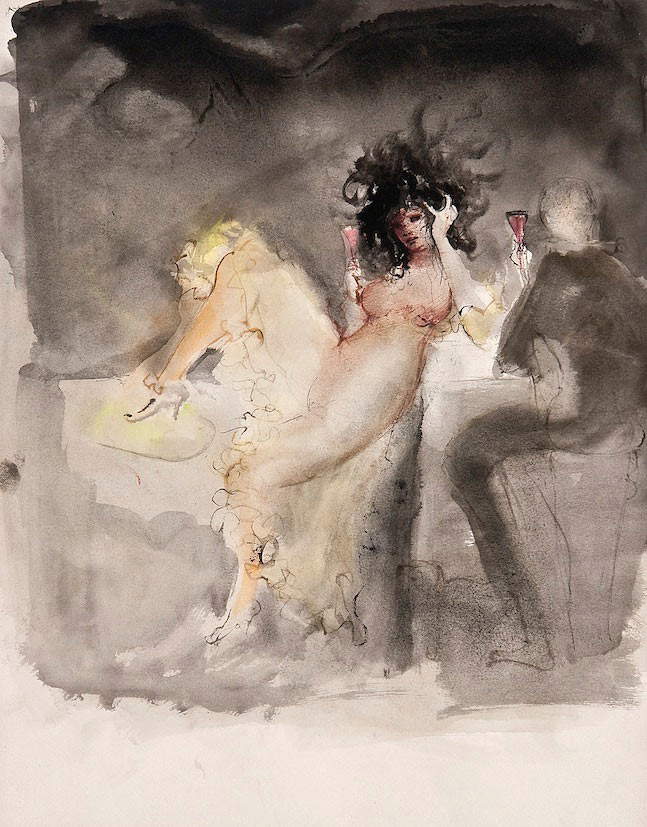 | Leonor Fini, Dancer at the Bench (1960s; watercolor, 60 x 40 cm; Trieste, Giulietta Frausin Collection) © Marianna Accerboni |
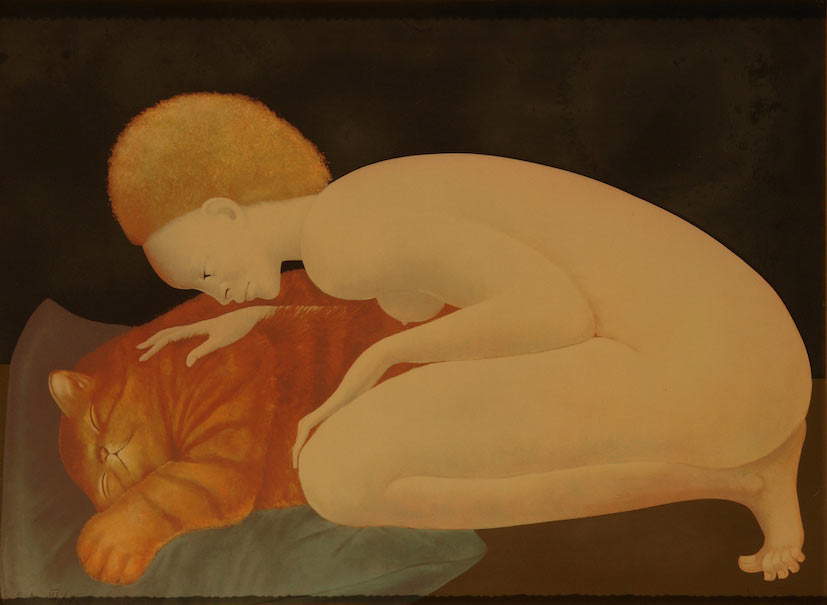 | Leonor Fini, Figure with Cat (1970s; lithograph, 52 x 74 cm; Trieste, Private Collection) © Marianna Accerboni |
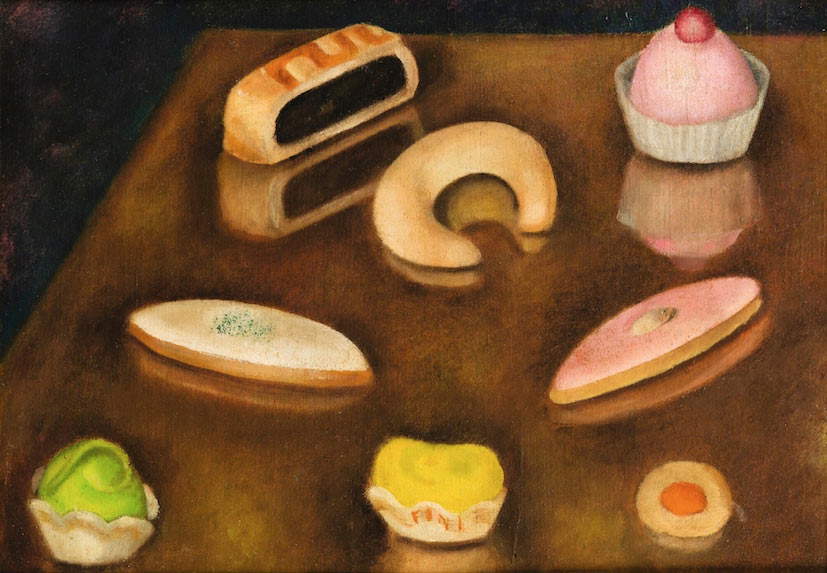 | Leonor Fini, Pâtisseries (ca. 1929; oils on panel, 25.8 x 34.8 cm; Trieste, Private Collection) © Marianna Accerboni |
On the occasion of the exhibition, a Painting Prize will be established, which will be awarded to a young promise of art, a Prize for the best illustration inspired by the work of Fini, who was also a refined illustrator, and a Children’s Competition, in which the best interpretation of the figure of the cat, a pivotal character in Leonor’s creativity, will be awarded. Numerous side events, guided tours and workshops dedicated to adults and children, always inspired by her works, will take place in the context of the exhibition.
Among the in-depth appointments, one will feature Cristina Battocletti, journalist for Il Sole 24 Ore, an expert on Trieste and Northeastern culture; another, Lilly Frausin, Leonor’s cousin, who will be interviewed by the curator. Other encounters will take place with Maria Grazia Spirito, former director of the MIDeC Museo Internazionale del Design Ceramico in Laveno Mombello (Varese), who will illustrate the porcelain decorated with Fini’s designs and produced by the Società Ceramica Italiana in the Lombard town, and with Mauro Galli, president of theAssociazione Grafologica Italiana section of Trieste, who will focus on handwriting and thus on Fini’s personality in relation to the handwriting and temperament of her friends Nathan and Dorfles; a further in-depth study will be carried out by Cristina Benussi, former director of the Department of Foreign Languages and Literatures and dean of the Faculty of Letters and Philosophy at the University of Trieste, who will talk about the literary significance of Leonor, who was also a writer and author of two poems, the staged reading of which will be the subject of another collateral event. There will also be comic book workshops for children and dillustration workshops for adults with Paola Ramella, an internationally renowned cartoonist from Trieste and owner of the Zerocinque School.
As part of the exhibition project, a book, edited by Accerboni, will be published in which all the works on display, the unpublished correspondence with the Triestine lamico Giorgio Cociani and with other personalities, and a reasoned discussion of the themes developed in the exhibition will be published. Attached to the book will be a video of the curator’s integral and unpublished interviews with Fini.
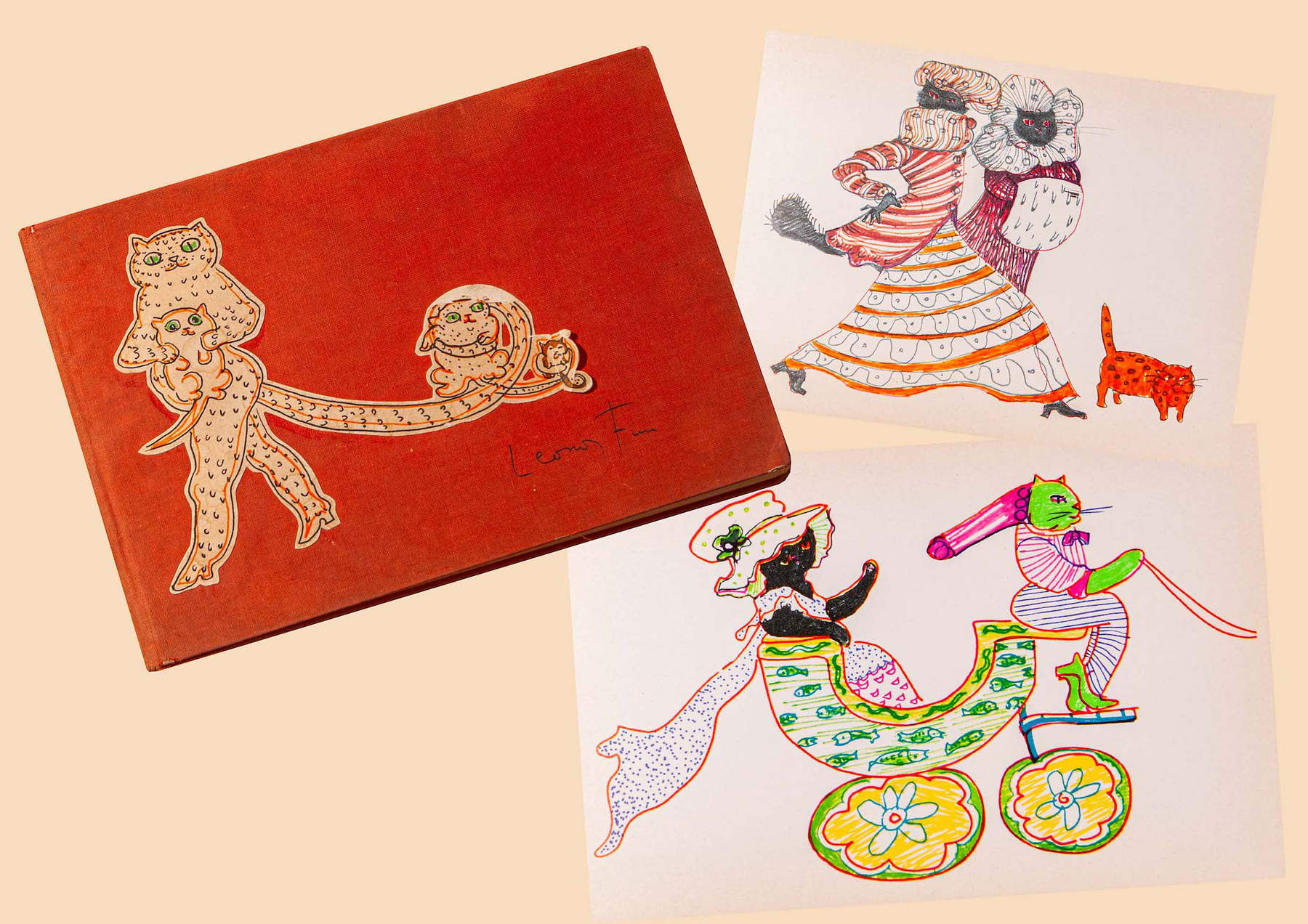 | Leonor Fini, Book with 49 color reproductions (1970s, ed. Lambert Monet Gallery, Geneva; Trieste, private collection) © Marianna Accerboni |
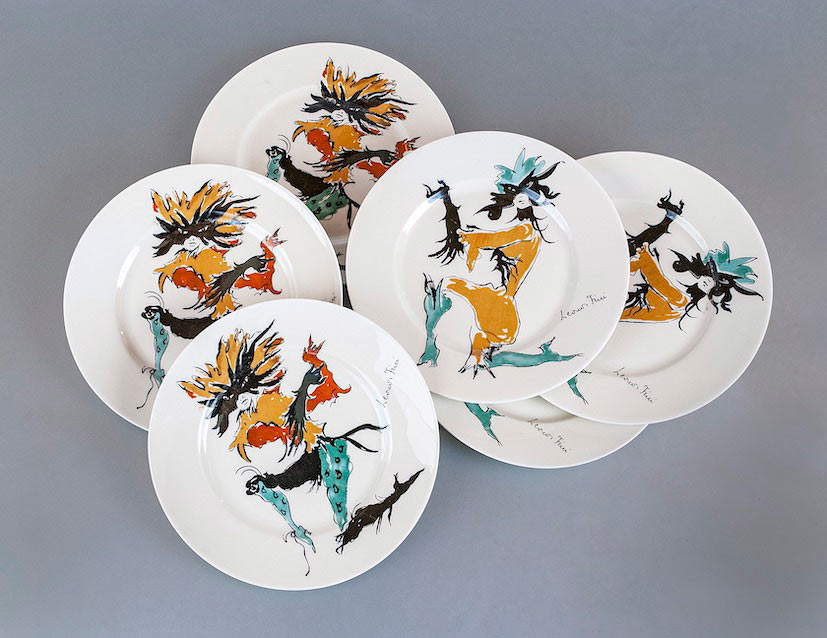 | Porcelain by Leonor Fini |
Born in Buenos Aires in 1907 to a father of Benevento origins and a Triestine mother of German descent, Leonor Fini was artistically formed in the first twenty years of her life in the fervid and lively cultural milieu of Trieste dell’epoca, suspended between Central European thought and Italian suggestions, in contact with personalities of international standing. In her city, where in 1969 the Giuliano Cronisti Group would award her the San Giusto dOro, she had forged close friendships with the painters Arturo Nathan, Carlo Sbisà and Edmondo Passauro, a portrait and figure painter who greatly influenced her inspiration and manner in those years. After depicting, according to a style still on the edge of tradition, eminent figures of the city of Giuliana, in Milan Leonor assimilated the Novecentistainfluence thanks to her encounter with the classicism of Achille Funi and the tonalism of Carlo Carrà and Arturo Tosi.
Upon moving to Paris in 1931, she abandoned that linguistic reference and soon became a refined interpreter of Surrealism, due in part to her contact with painters such as Giorgio de Chirico, Alberto Savinio, Filippo de Pisis, Massimo Campigli and the Surrealists doltralpe. She was the author of a very personal lexicon pervaded with restlessness, appreciated by critics and the public at a time when it was not easy for women to work in the field of art.
Having become part of the Parisian elite, thanks in part to her friend the writer and playwright André Pieyre de Mandiargues and de Pisis, she soon came into contact with André Breton, poet, art critic and theorist of Surrealism, and with his milieu, to which she was united by her pleasure in dreamlike symbolism and the fantastic, which she knew how to express with delicacy, great personality and decorative elegance. Extremely attached to Trieste and to her mother figure, Leonor Fini nevertheless maintained for almost forty years, according to a personal concept of fidelity, a stable affective triangulation with the diplomat and painter Stanislao Lepri and with the Polish intellectual Kostantin Jelenski, with whom she shared her Parisian home until their deaths. From then on she voluntarily isolated herself, later retiring to a farm in St-Dyé sur Loire, until her death in 1996 in Paris.
In addition to the many important exhibitions devoted to her in Belgium (1965), Italy (1983, 2005), Japan (1972-73, 1985-86, 2005), the USA (Weinstein Gallery, San Francisco 2001-2002, 2006, 2008; CFM Gallery, New York 1997, 1999), Paris has hosted her major solo shows at the Minsky Gallery (from 1998 to 2002, in 2004 and 2007, and from 2008 to the present). In Germany she was featured in 1997-98 at the Panorama Museum in Bad Frankenhausen, Thuringia. In Italy her works are at the Museo dArte Moderna Revoltella in Trieste, Peggy Guggenheim Collection in Venice, Galleria Nazionale dArte Moderna e Contemporanea and Museo Mario Praz in Rome, Galleria dArte Moderna e Contemporanea Palazzo Massari in Ferrara. In France: in Paris at the Musée dArte Moderne de la Ville de Paris, Centre Georges Pompidou and Théâtre National de l’Opéra; at the Grenoble Museum. A permanent exhibition and a commemorative space dedicated to her have been housed since 2008 at the Museum-Hospice Saint-Roch in Issoudun, France. She can be found in Belgium at the Musée d’Art Moderne in Brussels, in Switzerland at the Museum of Art and History in Geneva, in England at the Tate Modern in London, in Japan at the Miyazaki Prefectural Art Museum in Miyazaki, and in the United States at theArt Institute of Chicago.
 |
| Surrealist painter, stage designer, writer: Leonor Fini on exhibition in Trieste |
Warning: the translation into English of the original Italian article was created using automatic tools. We undertake to review all articles, but we do not guarantee the total absence of inaccuracies in the translation due to the program. You can find the original by clicking on the ITA button. If you find any mistake,please contact us.